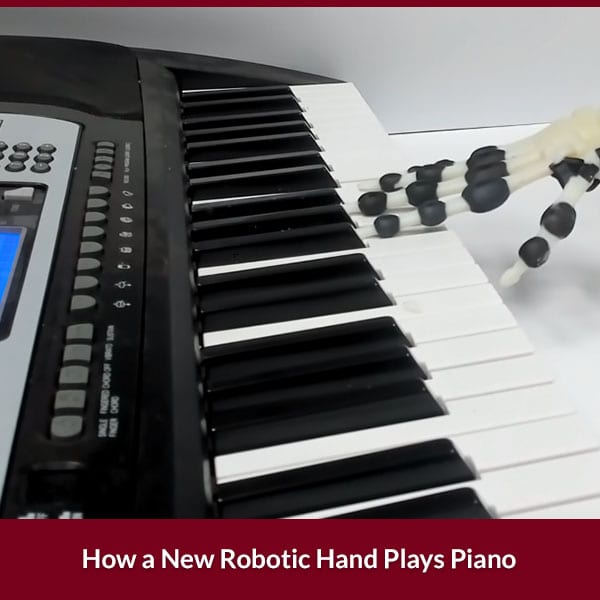 As time goes by there’s one thing we can rest assured of: We’ll never run out of things to marvel in. One of the most recent things is that there’s now a robot hand that can play piano. While we shouldn’t be surprised that the robot hand does a great job of this, what we should be surprised by is the fact that it can do this at all. Nevertheless, here we sit with this robotic hand that was created in the University of Cambridge’s robotics lab and we probably don’t even quite understand why we should marvel at it.
As time goes by there’s one thing we can rest assured of: We’ll never run out of things to marvel in. One of the most recent things is that there’s now a robot hand that can play piano. While we shouldn’t be surprised that the robot hand does a great job of this, what we should be surprised by is the fact that it can do this at all. Nevertheless, here we sit with this robotic hand that was created in the University of Cambridge’s robotics lab and we probably don’t even quite understand why we should marvel at it.
Understanding the new Robotic Hand
Science Robotics describes this new robotic hand as something worthy of marveling at because it recreates the bones and ligaments we have in our own human hand and yet it’s 3D printed from a variety of materials. This means that the robotic hand has joints with adjustable stiffness so that it can play various musical notes simply because its fingers are able to react to the different conditions they encounter instead of having each finger itself move. What this means is that the robotic hand only moves at the arm and wrist level. As such, its motor skills are produced by a standard robotic arm attachment. This lets each of the skeletal fingers react differently to the piano keys based on the joints’ stiffness and how they’re placed on the keys themselves. This allows it to play piano in various music styles like glissando, the staccato single-finger technique, and even a crawling baseline that’s inspired by Fats Waller.
Future Implications of Today’s Robotic Piano-Playing Hand
With all the great variety this hand can produce, it’s easy to forgive it when it does occasionally fumble. This is especially true when you pause to consider how much simpler and energy efficient this hand is than one that powers each individual finger separately. While such a system may be more accurate in playing individual notes, this robotic hand is more versatile and can produce more subtler movements. Having been printed in a way that’s passive and yet anthropomorphically correct means it’s also able to reproduce more complex hand movements that human hands themselves were only capable of in the past – things other conventional robots still can’t do.
The way this robotic hand plays piano still isn’t nearly as good as the advanced human dexterity that we display. Nevertheless, there are some practical applications available for this technology – things like improving how prosthetics are designed and offering delicate control for industries that are trying to automate storage or manufacturing processes. It may even help biologists have a better understanding of animal anatomy. Of course, we should expect for this technology to still need a little time to fully develop. After all, any good musician will tell you that to play piano you need lots of practice. Until that time comes, why not learn to play piano yourself with a little help from the fine folks at Dave’s Piano Showroom?
Picture Credit: Youtube